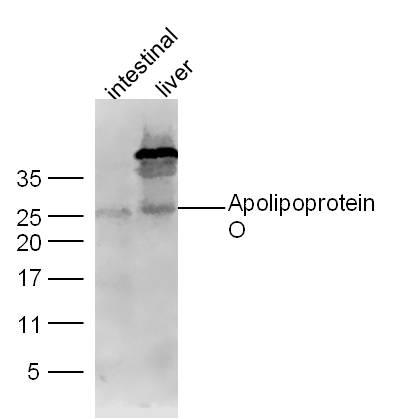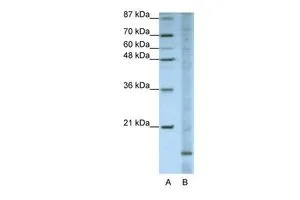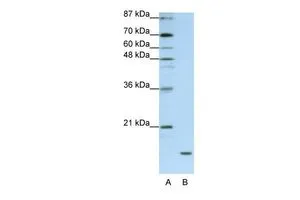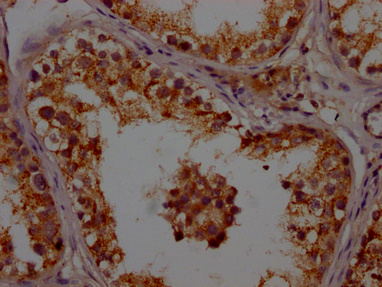![IHC-P analysis of human Testis tissue using GTX83136 Apolipoprotein O antibody [2F1]. IHC-P analysis of human Testis tissue using GTX83136 Apolipoprotein O antibody [2F1].](https://www.genetex.com/upload/website/prouct_img/normal/GTX83136/GTX83136_20170912_IHC-P_w_23061322_347.webp)
IHC-P analysis of human Testis tissue using GTX83136 Apolipoprotein O antibody [2F1].
Apolipoprotein O antibody [2F1]
GTX83136
ApplicationsWestern Blot, ELISA, ImmunoHistoChemistry, ImmunoHistoChemistry Paraffin
Product group Antibodies
TargetAPOO
Overview
- SupplierGeneTex
- Product NameApolipoprotein O antibody [2F1]
- Delivery Days Customer9
- Application Supplier NoteWB: 1/500 - 1/2000. IHC-P: 1/200 - 1/1000. ELISA: 1/10000. *Optimal dilutions/concentrations should be determined by the researcher.Not tested in other applications.
- ApplicationsWestern Blot, ELISA, ImmunoHistoChemistry, ImmunoHistoChemistry Paraffin
- CertificationResearch Use Only
- ClonalityMonoclonal
- Clone ID2F1
- ConjugateUnconjugated
- Gene ID79135
- Target nameAPOO
- Target descriptionapolipoprotein O
- Target synonymsFAM121B, MIC26, MICOS26, Mic23, My025, MICOS complex subunit MIC26, MICOS complex subunit MIC23, brain my025, family with sequence similarity 121B, mitochondrial contact site and cristae organizing system subunit 26
- HostMouse
- IsotypeIgG1
- Protein IDQ9BUR5
- Protein NameMICOS complex subunit MIC26
- Scientific DescriptionThis gene is a member of the apolipoprotein family. Members of this protein family are involved in the transport and metabolism of lipids. The encoded protein associates with HDL, LDL and VLDL lipoproteins and is characterized by chondroitin-sulfate glycosylation. This protein may be involved in preventing lipid accumulation in the myocardium in obese and diabetic patients. Alternative splicing results in multiple transcript variants. Pseudogenes of this gene are found on chromosomes 3, 4, 5, 12 and 16.[provided by RefSeq, Sep 2009]
- Storage Instruction-20°C or -80°C,2°C to 8°C
- UNSPSC12352203

![WB analysis of HepG2 (1) and 3T3L1(2) cell lysate using GTX83136 Apolipoprotein O antibody [2F1]. WB analysis of HepG2 (1) and 3T3L1(2) cell lysate using GTX83136 Apolipoprotein O antibody [2F1].](https://www.genetex.com/upload/website/prouct_img/normal/GTX83136/GTX83136_20170912_WB_w_23061322_493.webp)







